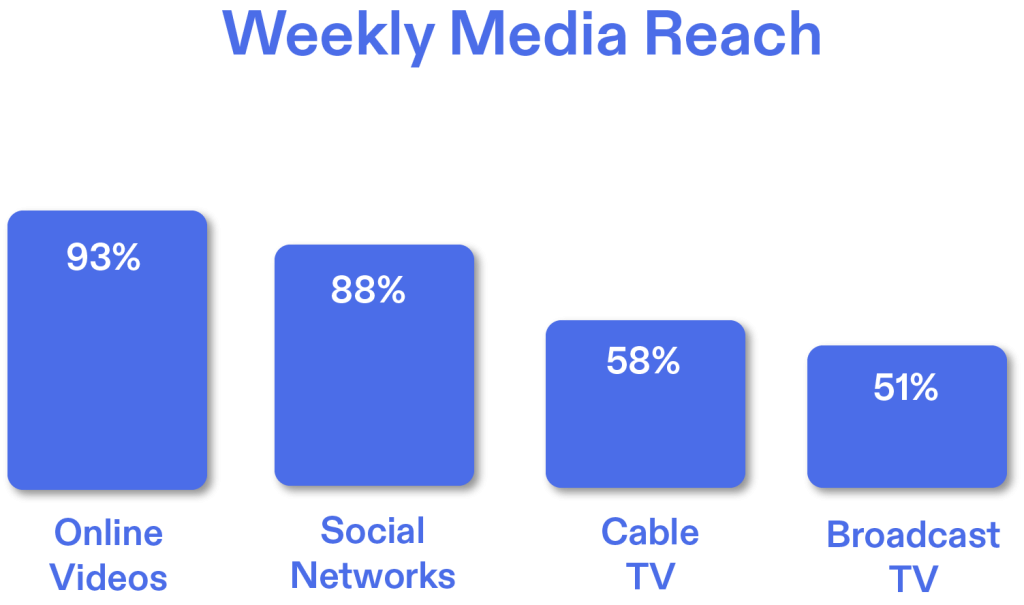The Power of Social Media Marketing
With the advent of the internet, one of the most significant changes in the world of advertising has been the ability for companies to deliver targeted digital ads. This allows, for example, a company dedicated to investment in financial products to showcase its services to readers of websites with content related to economics or stock market investment.
In Latin America, the average Internet penetration rate is 75%, according to official statistics for each country.
The global digital landscape presents big contrasts in internet penetration rates across continents. Europe boasts a near-universal online presence at an impressive 84%, surpassing even Iceland’s connectivity. In contrast, Africa reveals a diverse picture, with an average of 47%, concealing vast disparities comparable to the Sahara’s expanse. While South Africa thrives with digital connectivity, the Democratic Republic of the Congo remains largely offline.
Asia mirrors this uneven terrain, with the Eastern peaks at 75% and the Southern plains at a modest 48%. Latin America maintains a stable plateau at 75%, distant from the high connectivity levels of North America and Oceania at around 90%. Notable digital giants like the United States and Australia stand as online peaks, towering over others.
As a consequence, digital marketing is no longer an emerging market trend, but an indispensable investment for companies. Having an online presence is a must for companies who want to be discoverable to their customers.
Social networks are one of the most influential and important places for brand promotion and positioning.

Their true strength lies in their power to influence since they offer a direct way for businesses to connect with and draw in customers through the right content.
The number of online users is almost 68% of the world’s population, so when it comes to posting a digital ad, a large number of people can be reached almost instantaneously.

Tell Your Own Story!
Social networks enable a level of personal connection between the brand and people’s daily lives.
The role of traditional media such as TV, newspapers, etc, was primarily a functional one, i.e. to deliver the news and advertising was merely the business model that supported that. On the other hand, digital media enables a deeper level of connection with brands beyond simply one-way or broadcasting advertising; creating an opportunity for more collaborative relationships to evolve between brands and their customers.
This makes it possible to tell the brand story from a more authentic standpoint, relating successes or failures to encourage your followers, inspire them, and develop a more meaningful relationship with them.
When thinking about how to craft these messages, it is essential to take into account the format and type of content to be presented — and ensure that it is relevant, precise targeting is an ineffective strategy. It is advisable that the content you post is closely based on the interests and consumption habits of this target audience.
How the connection between a company and a customer is built plays an important role in converting them from a potential consumer to loyal and regular ones.
Reach your target audience in a more agile and effective way!
Social media platforms have gathered data from the user’s activities and interests since their beginnings. This information is crucial for targeting a company’s audience correctly.
By segmenting users in this way, digital media companies enable more accurate and relevant marketing activities, resulting in a better experience for users and more cost efficiencies for advertisers. Segmentation can be carried out based on certain characteristics, including sex, age, socioeconomic status, geographic location, or language, among others.
One of the huge benefits of social media is that it is much more accessible to businesses of any size, anywhere around the world once you have an internet connection, to advertise their products and grow their online presence.
The advertising tools are free to anyone who wants to use them and have a system that is intuitive enough to be able to manage advertising simply. However, the more effort you put into creating a strategy and campaign structure, the better the results will be.
The cost of social media ads is relatively cheaper compared to other advertising methods. However, its key point is the possibility of measuring precisely and effectively if you are impacting the target audience.
By advertising on social media, businesses get a broader reach, and as a consequence, it improves their conversion rate, that is to say, they get more customers with less economical effort.
